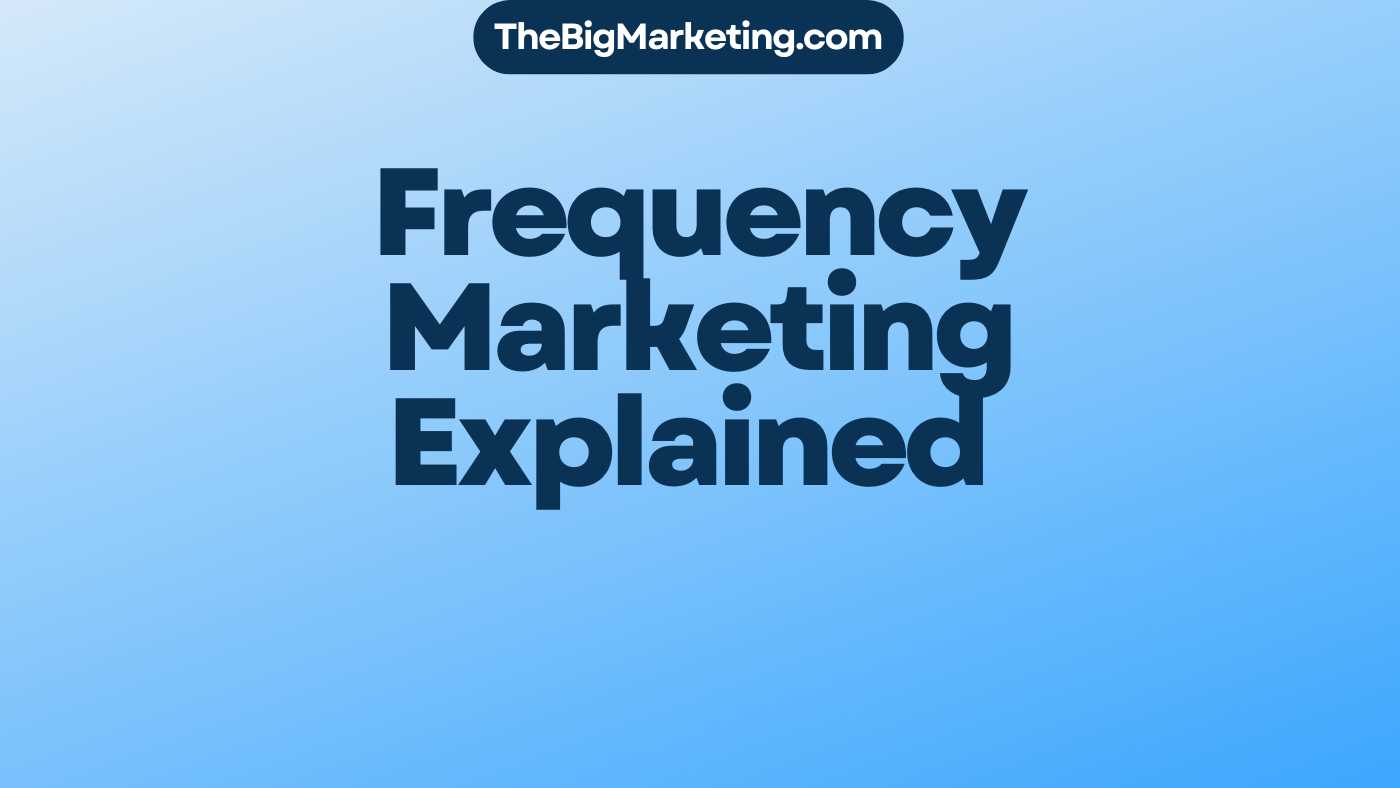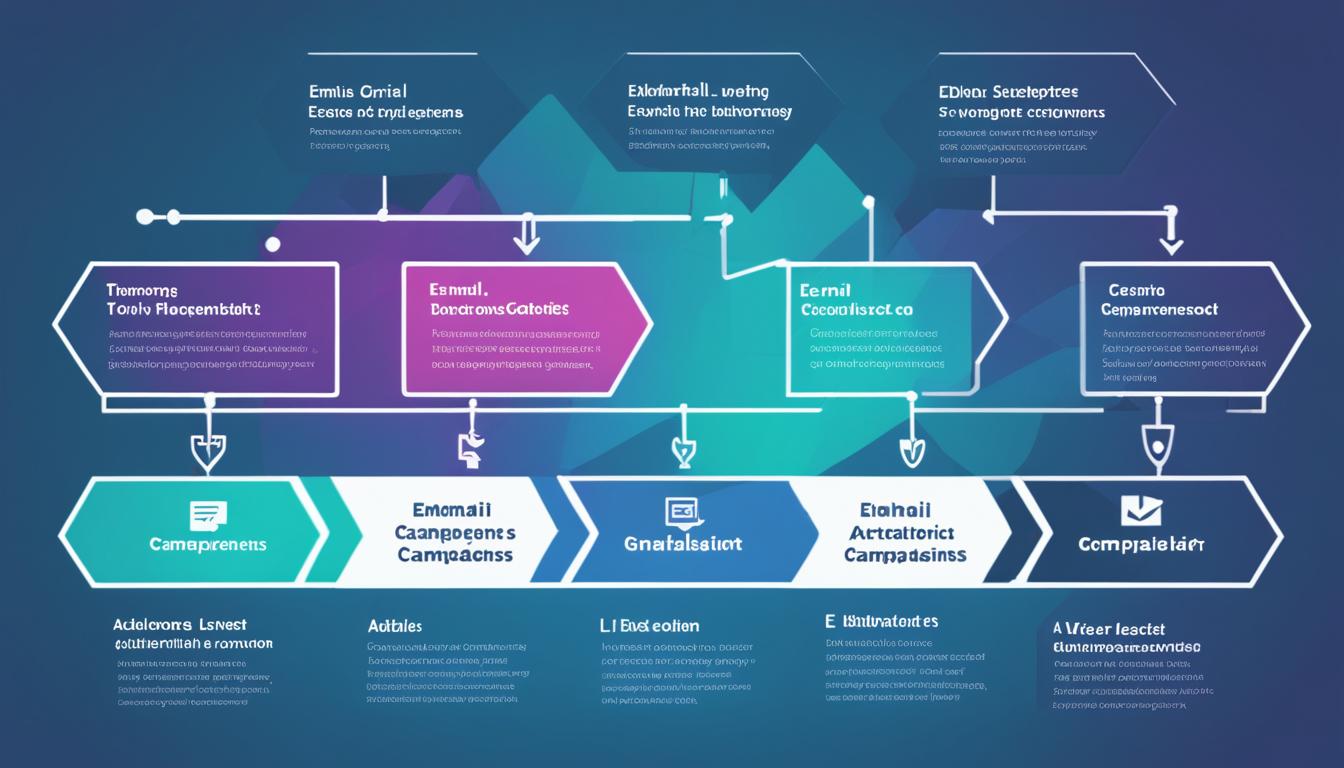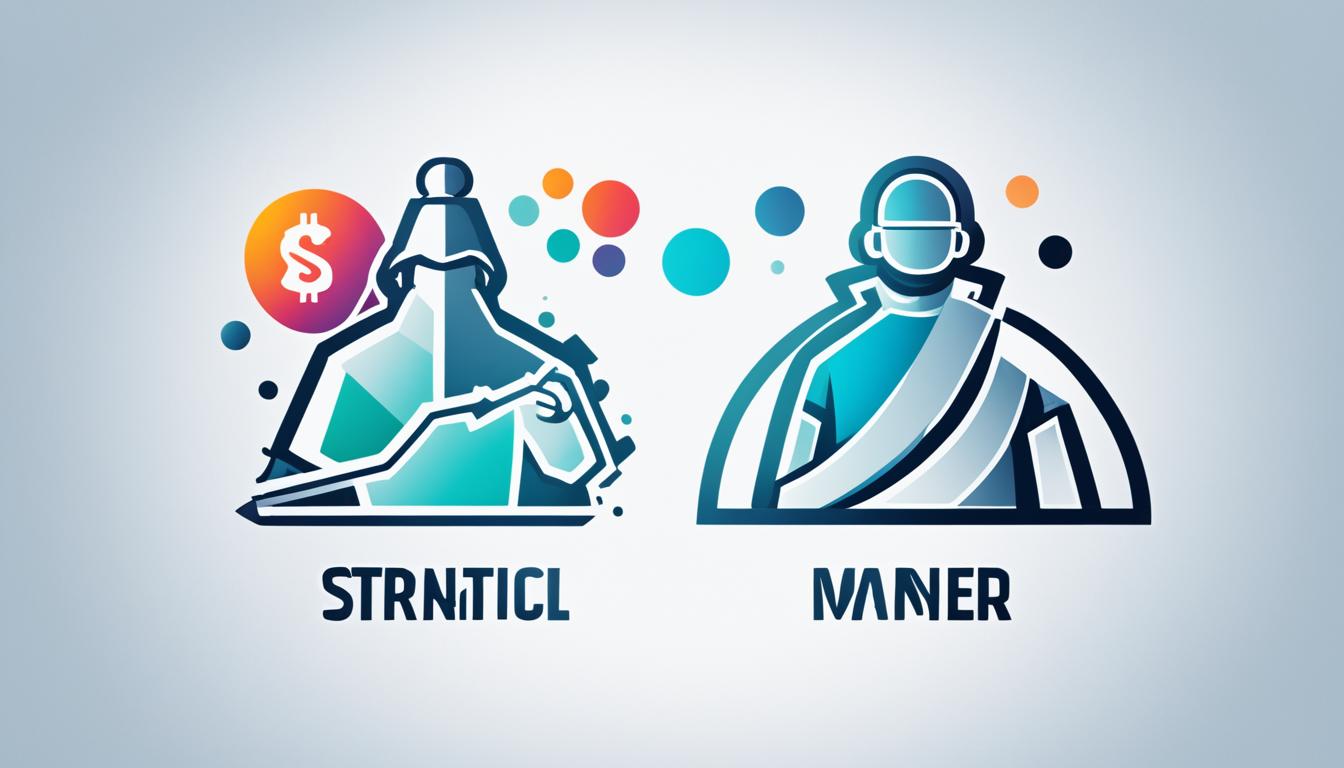Earned media value (EMV) is key for PR and marketing folks. It tracks the success of their efforts. It does so by looking at increased KPIs and ROI. Earned media value is tied to PR work. It relies on others to spread brand news. To get it right, one must use metrics like impressions and cost per thousand (CPT).
Key Takeaways:
- EMV is a metric used to measure the impact of PR and marketing campaigns.
- It reflects the success of campaigns by analyzing KPIs and ROI.
- EMV is specific to PR campaigns and relies on third-party content.
- Accurate measurement of EMV requires metrics like impressions and CPT.
- Tracking EMV helps optimize marketing activities and achieve campaign goals.
What is earned media value?
Earned media value (EMV) measures how much return you get from PR and marketing efforts. It’s different from paid or owned media, which brands control. Instead, earned media spreads through third parties like blog posts and influencer marketing. This way, EMV shows the worth of these efforts and their impact on business goals.
Earned media is key in making more people know about your brand. It’s part of a full marketing plan, next to paid and owned media. With earned media, businesses reach more people by using the trust and influence of others. This builds trust with the audience they want to reach.
The Importance of Earned Media Value (EMV)
Knowing the value of earned media lets brands see how well their PR and marketing are working. By looking at the EMV, they can:
- See how their messages are doing with their audience.
- Check if working with influencers is bringing good results.
- Figure out the best ways to spread the word and engage people.
- Show how much value earned media brings to the table.
- Decide wisely on where to put their resources and money next.
Checking EMV is essential for making smart marketing choices. It offers a clear way to see if earned media efforts are paying off. Brands can then improve their approach to get better results.
Create a table showcasing the benefits of measuring Earned Media Value:
| Benefits of Measuring Earned Media Value |
|---|
| 1. Demonstrates the impact of PR and marketing efforts |
| 2. Helps identify effective channels and messaging strategies |
| 3. Enables better resource allocation and budgeting |
| 4. Provides actionable insights for campaign optimization |
| 5. Enhances overall marketing performance and ROI |
By looking into earned media value, brands can truly understand their marketing success. This helps push for even better results.
How to measure earned media value?
Measuring earned media value (EMV) is key to seeing if PR and marketing efforts hit their mark. Though no one-size-fits-all method exists, certain metrics and models are commonly used. A popular approach takes into account impressions and the cost per thousand (CPT).
Impressions measure the potential audience of an earned media campaign. They show us how far and wide the content traveled. CPT, on the other hand, estimates what those impressions would cost in paid ads. Comparing these costs gives us a way to value earned media efforts.
However, keep in mind that these metrics can sometimes be unclear and seen as less critical. Tools like Brand24 help get around this by offering a clear measure of EMV. They look at things like sentiment analysis, social media stretch, and voice share, which offer a fuller picture of a campaign’s impact.
Using tools like Brand24 doesn’t just provide accurate EMV measurements. It also allows for constant monitoring and analysis of PR and marketing activities. This leads to better, information-based decisions and helps in polishing strategies for improved results.
Understanding EMV properly is crucial to grasp the success of PR and marketing efforts, to figure out ROI, and to show their influence on business aims.
The Role of Media Monitoring Tools
Tools like Brand24 are invaluable for measuring EMV. They offer live data on mentions, interactions, feelings, and social media reach. This lets PR and marketing folks keep an eye on their campaigns and see how they stack up against competitors. Plus, with customizable dashboards and thorough reports, tracking and reporting become a breeze.
| Metrics | Description |
|---|---|
| Impressions | The number of times content is viewed or encountered by the audience. |
| Cost per thousand (CPT) | The expected cost of achieving a thousand impressions through paid advertising. |
| Sentiment analysis | The evaluation of whether mentions are positive, negative, or neutral, providing insight into the overall sentiment around a brand or campaign. |
| Social media reach | The total number of unique individuals who have been exposed to a brand’s content on social media platforms. |
| Share of voice | The percentage of the overall conversation in a particular industry or niche that a brand or campaign holds. |
By tapping into these metrics and employing media monitoring tools, PR and marketing pros can deeply understand their earned media value. This enables them to make well-informed choices, fine-tune their campaigns, and meet their business goals.
The benefits of earned media value
Using earned media is great for businesses. It brings a lot of advantages to marketing strategies. Let’s talk about the main benefits:
1. Boosts Engagement and Brand Awareness
Earned media makes people talk about a brand. This bumps up engagement with the target audience. Getting attention through influencers and articles lets businesses reach more social media users.
With more brand awareness, companies become more visible. This helps them connect with more potential customers.
2. Extends Customer Lifetime Value
Keeping customers through earned media builds lasting relationships. Good mentions and reviews make people want to stay loyal. Loyal customers keep coming back, which increases their value to the business.
This value is key for a company’s growth and its profit.
3. Builds a Trustworthy Community
Earned media uses influencers and word-of-mouth to share a brand’s messages. Working with credible influencers earns the audience’s trust. This trust makes a strong community of followers and happy customers.
By doing this, businesses can show they are authentic. This attracts more potential customers.
4. Generates Long-Term Results
Earned media has effects that last longer than ads. The content stays online forever. This allows it to keep attracting new customers over time.
Since this content doesn’t go away, it’s always working to bring in traffic and leads.
5. Enhances Influencer Marketing Efforts
Earned media is key to good influencer marketing. It makes a brand’s message louder through influencers. Influencers create real content, build connections, and improve engagement.
This leads to more people knowing about the brand and possibly more sales.
Earned media truly brings many advantages to businesses. From helping with brand awareness to bringing in long-term benefits. By using it and working with influencers, companies can do much better in their marketing.
The drawbacks of earned media value
Earned media value (EMV) has many benefits but also drawbacks. Calculating EMV accurately is difficult. It’s often seen as just a vanity metric.
The metrics for EMV can be unclear, making it hard to know a campaign’s true value. This can be frustrating.
Investing in earned media takes a lot of time and effort. Building a community and gaining trust takes dedication. It doesn’t happen overnight and needs constant work.
Still, the long-term rewards of earned media, like brand loyalty, are worth it. They offer great benefits for the brand.
The Challenges of Calculating EMV
Calculating earned media value is tricky. Metrics, like impressions, are open to interpretation. This makes it tough to measure correctly.
These inconsistencies make it hard to gauge earned media’s real impact. It’s challenging to know its true value.
Time and Resource Investment
Earned media value needs a big investment in time and resources. It involves building a community and earning trust. This requires ongoing engagement and dedication.
To do this, you have to keep up with customer interactions. You also need to manage relationships well. This effort helps cultivate long-term awareness and loyalty.
Overcoming the Drawbacks
Despite the difficulties, earned media value is still valuable. To tackle the calculation challenges, use advanced media tools. This provides more accurate data.
Committing to community management helps too. Focusing on long-term relationships is key. This way, businesses earn better brand visibility and loyalty from customers.
Should you measure earned media value?
Measuring earned media value is key for PR managers and marketers. It shows the impact of their work and improves their actions. By knowing the value of PR and campaigns, businesses can meet their goals well. It gives insights into marketing success, showing the good effects on brand trust and reputation.
Not measuring earned media value makes it hard to know if goals are met or need work. By checking metrics like engagement and social reach, PR pros can see how effective their campaigns are. They get insights that help in fine-tuning their strategies.
One way to measure it is by using media monitoring tools. These tools give detailed reports and analytics. They help track the success of PR and marketing efforts. This lets pros make decisions based on data. By knowing the impact of earned media, they can tweak their tactics and use resources better.
The Benefits of Measuring Earned Media Value
- Effective Goal Achievement: Monitoring earned media shows if campaigns hit their targets. This lets PR teams strategize better, making sure efforts match business goals.
- Identifying Areas for Improvement: By measuring it, PR teams can see where to boost their campaigns. Looking at metrics like engagement helps tailor strategies for more impact.
- Optimizing Resource Allocation: Knowing the value of earned media guides where to use resources best. It points to the most successful channels, helping spend on what works best.
In summary, measuring earned media value is vital for PR work. Using media tools and focusing on key metrics helps align with goals. It ensures PR pros can make the most of their strategies and the value they create.
| Benefits of Measuring Earned Media Value |
|---|
| Effective Goal Achievement |
| Identifying Areas for Improvement |
| Optimizing Resource Allocation |
Definition of Earned Media Value
Earned media value (EMV) is a key metric in influencer marketing. It measures the value created by campaigns. This metric sheds light on the effectiveness and return on investment (ROI) of using influencers. EMV counts various online activities like shares, likes, and comments, plus user mentions, ratings, and recommendations.
By adding a value to these online interactions, EMV estimates the money’s worth of the exposure gained from influencer marketing. This helps understand the influence on brand recognition and visibility.
| Type of Social Interaction | Description |
|---|---|
| Shares | When users share influencer posts with their own followers, extending the reach and visibility of the brand. |
| Likes | When users express their positive sentiment towards influencer content by liking posts. |
| Comments | When users engage with influencer posts by leaving comments, initiating conversations, and expressing their thoughts. |
| Mentions | When users mention the brand or campaign in their own posts or comments, bringing further awareness to the brand. |
| Ratings | When users rate a product or service endorsed by an influencer, providing social proof and credibility to potential customers. |
| Recommendations | When users recommend the brand or influencer to their friends, followers, or network, amplifying brand recognition and trust. |
EMV is vital in assessing influencer marketing campaigns’ success. It shows the financial value brought by social activities and the effect of working with influencers. By reviewing and studying EMV, marketers can refine their strategies. They make smarter choices and use resources wisely to boost the brand’s market presence.
How to calculate Earned Media Value
To figure out the earned media value (EMV) of your efforts, you’ll need to think about a few key points. These include what you’re aiming to achieve, what kind of content you’re using, and how you plan to share it. A popular way to calculate this involves looking at impressions, the cost for a thousand impressions (CPM), and an extra factor to gauge how well your campaign did.
Impressions show how many people could potentially see your work. This helps you understand how far your campaign might reach. CPM tells you the cost for every thousand views in paid ads. By using these numbers and adding an adjustment factor, you can figure out your campaign’s EMV.
| Metrics | Explanation |
|---|---|
| Impressions | The number of people who see your campaign |
| Cost per Thousand Impressions (CPM) | The average cost of a thousand impressions |
| Adjustment Variable | A measure of campaign success to fine-tune the calculation |
With the formula Impressions x CPM x Adjustment variable, you find out the EMV from your campaign. This helps you see the value your PR and marketing bring. It’s a great way to check if your strategies work and to make choices based on data.
Why is Earned Media Value a key indicator?
Earned Media Value (EMV) is vital for assessing marketing strategy effectiveness. It measures value from PR and marketing actions. This shows the success of influencer campaigns, brand trust, and connection building.
EMV boosts brand trust notably. Influencers talking about a brand builds consumer confidence. This organic marketing raises a business’s reputation and target audience trust.
EMV helps in reaching more people and getting new customers. Through influencer marketing, companies connect with more potential customers. Influencers’ stories and tips cause a chain reaction. This increases brand presence and draws in customers.
Moreover, EMV supports a data-informed way to pick influencers. It measures influencers’ value, aiding in wise partnerships. This method also enhances marketing efforts and lowers the chance of poor collaboration.
EMV offers a fuller value picture compared to traditional ROI metrics like clicks. It captures long-term effects of influencer campaigns on brand trust and real connections. Traditional ROI only looks at immediate metrics, missing the bigger picture.
| Benefits of Earned Media Value | Drawbacks of Earned Media Value |
|---|---|
| Increases brand credibility | Difficulty in accurately calculating EMV |
| Expands audience and generates meaningful connections | Perceived as a vanity metric |
| Enables data-driven influencer marketing strategy | Requires time and resources for community building |
| Provides a comprehensive measure of value compared to traditional ROI |
What is Earned Media?
Earned media is when a brand gets noticed for free thanks to people talking about it. This happens through shares on social media, blog posts, news articles, customer reviews, and simply by word of mouth. It’s a way to figure out how much these mentions are worth. It’s great for making a brand more visible, trusted, and for reaching out to new groups.
Brands that are talked about a lot by consumers see many benefits. They get more well-known because people are naturally sharing and talking about what they offer. When articles or customer reviews say good things, it makes the brand look reliable. Happy customers talking to others can bring a lot of attention. This helps in attracting more customers and spreading the brand further.
Using earned media means brands can highlight how much customers like them. If a customer shares their love for a brand, it gets more people interested. This kind of sharing can bring in new people and start conversations with potential buyers.
Earned media influences what people buy a lot. Seeing good reviews or influencers talking about a brand can convince others. When people notice a brand being recommended, they’re more likely to trust and consider it themselves.
It also affects how people see the brand. Media stories and mentions can paint a brand in a good light. This can position the brand as a leader or an innovator in its field.
In summary, earned media is key for brands wanting to be seen more, gain trust, and connect with customers. By encouraging people to talk, share, and promote the brand, it can spread its message wider.
How do you calculate your Earned Media Value?
Earned media value (EMV) measures the impact of your PR and marketing efforts. To figure out your EMV, you should look at engagement and exposure.
Engagement: This is about how people react to your content online. That includes likes, comments, and shares. Every action has a price attached, based on its reach. For instance, a share can be worth more because it spreads your message further.
Exposure: This covers how much your brand gets mentioned on different platforms. We look at followers, views, and website visits that come from your campaign. The more people you reach, the better your brand’s exposure.
The Ayzenberg method helps calculate EMV by focusing on engagement and exposure. It gives specific values to each interaction. Then, it multiplies these by the number of times they happened. This way, you get a clear number showing your campaigns’ worth.
Remember, EMV is just one piece of the puzzle. You should also look at engagement rate, ROI, and website traffic. These metrics together give a full picture of how well your PR and marketing are doing.
Here’s a table to show how you can work out EMV using engagement and exposure:
| Engagement Type | Value | Number of Engagements | EMV |
|---|---|---|---|
| Likes | $0.10 | 500 | $50.00 |
| Comments | $0.20 | 200 | $40.00 |
| Shares | $1.00 | 100 | $100.00 |
With this method, you can easily figure out your earned media campaigns’ total EMV. It lets you see how much value your online activities bring to your brand.
Conclusion
Earned media value (EMV) is a helpful tool for measuring the success of PR and marketing efforts. It shows the value created by influencer marketing. By understanding EMV, businesses can see how well their marketing strategies are working.
Calculating EMV has its challenges. However, using tools like Brand24 can make it easier. These tools look at engagement, feelings towards the brand, social media reach, and how much people are talking about the brand.
Measuring EMV helps businesses improve their marketing. It lets them see the effects of their PR and marketing actions. By knowing this, they can make smarter choices to boost their strategies and get a better return on investment. EMV helps to highlight the paths to better engagement and a stronger presence for the brand.
In sum, EMV is key to understanding the effectiveness of PR and marketing campaigns. It helps measure the value they create. With this knowledge, companies can take smart steps. They will focus on measuring EMV to enhance their marketing efforts and reach their goals.






